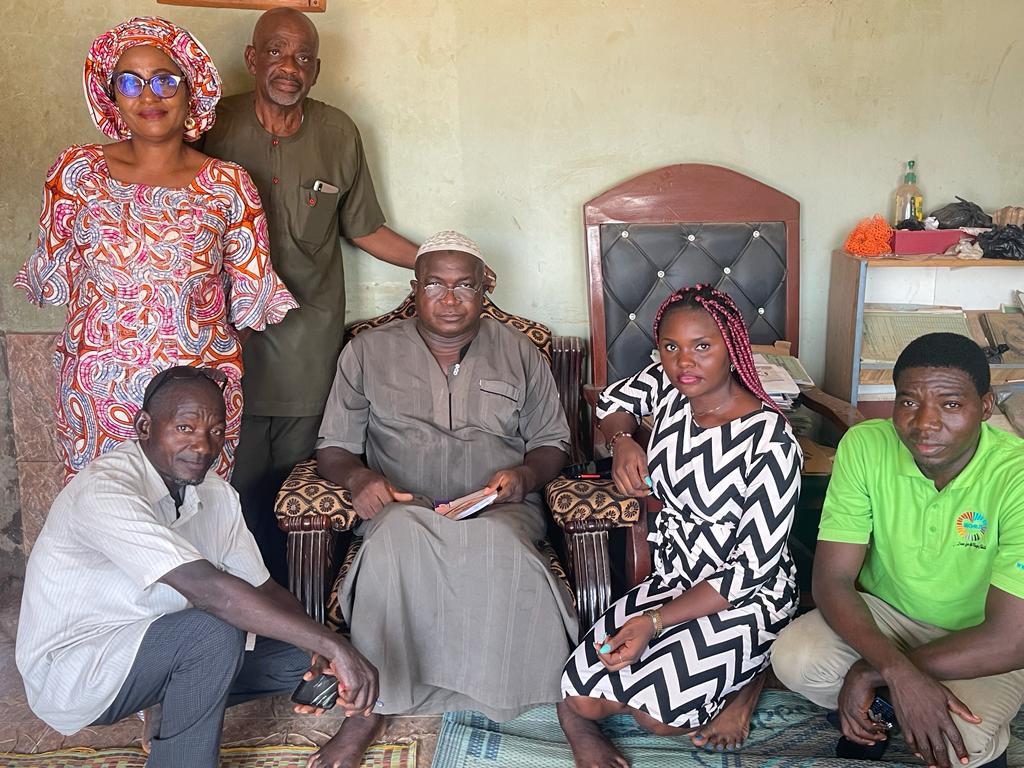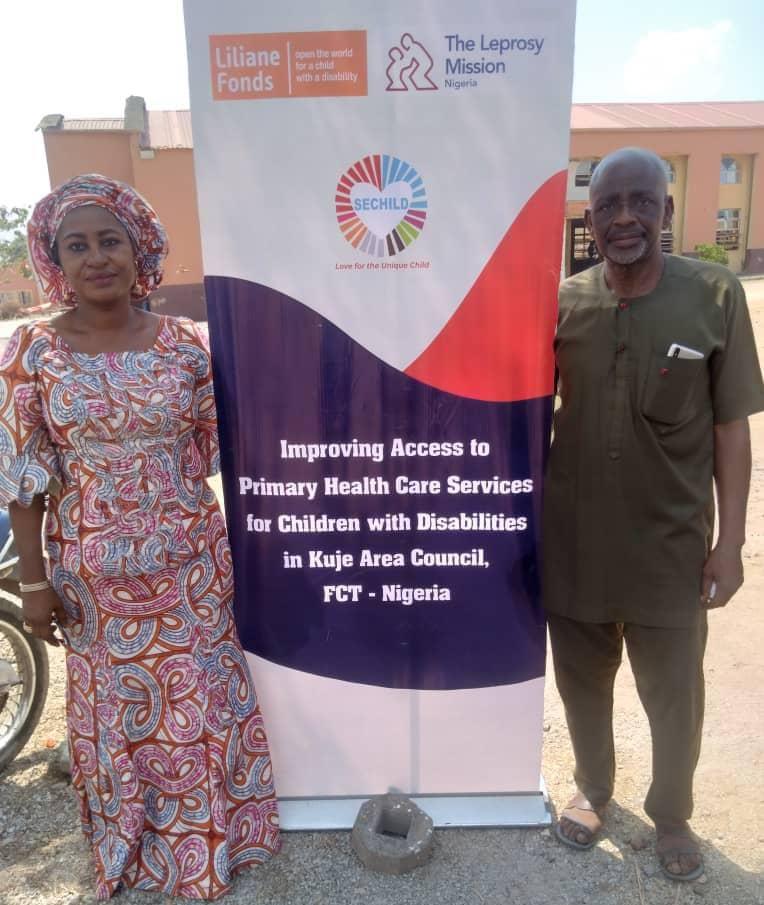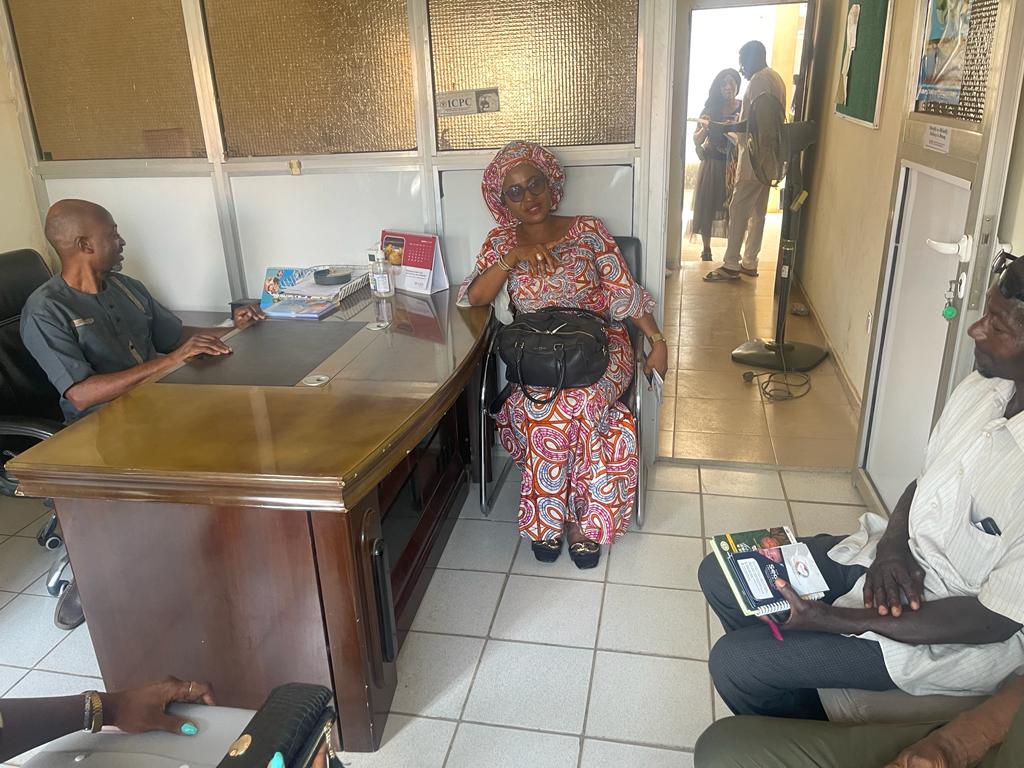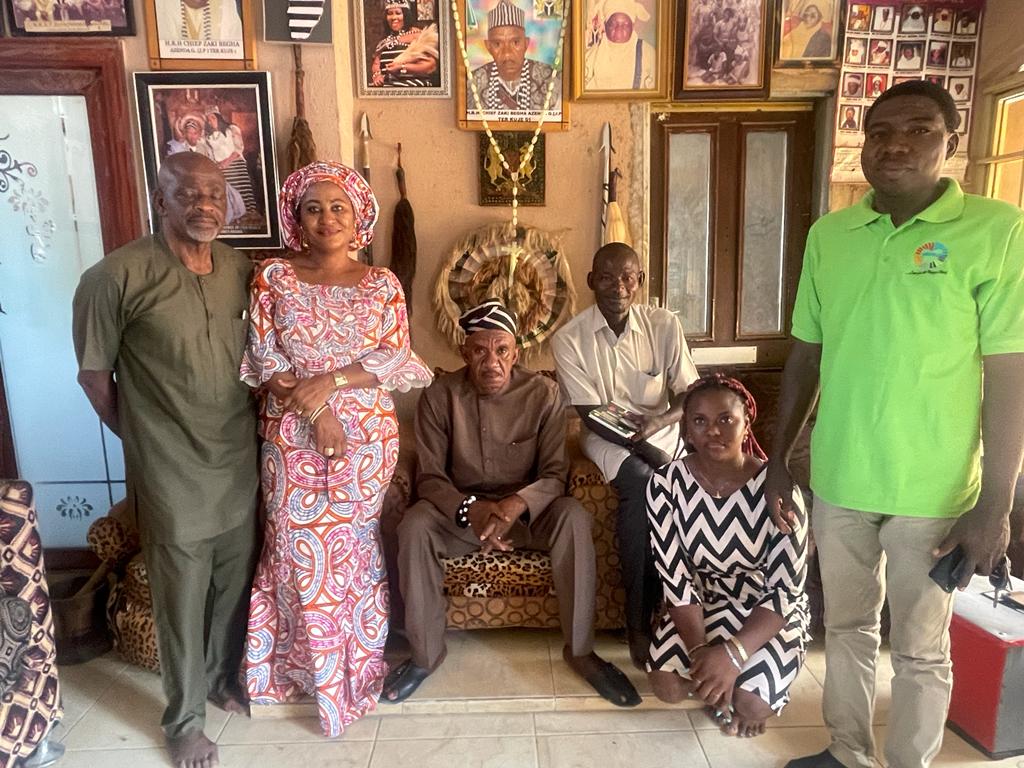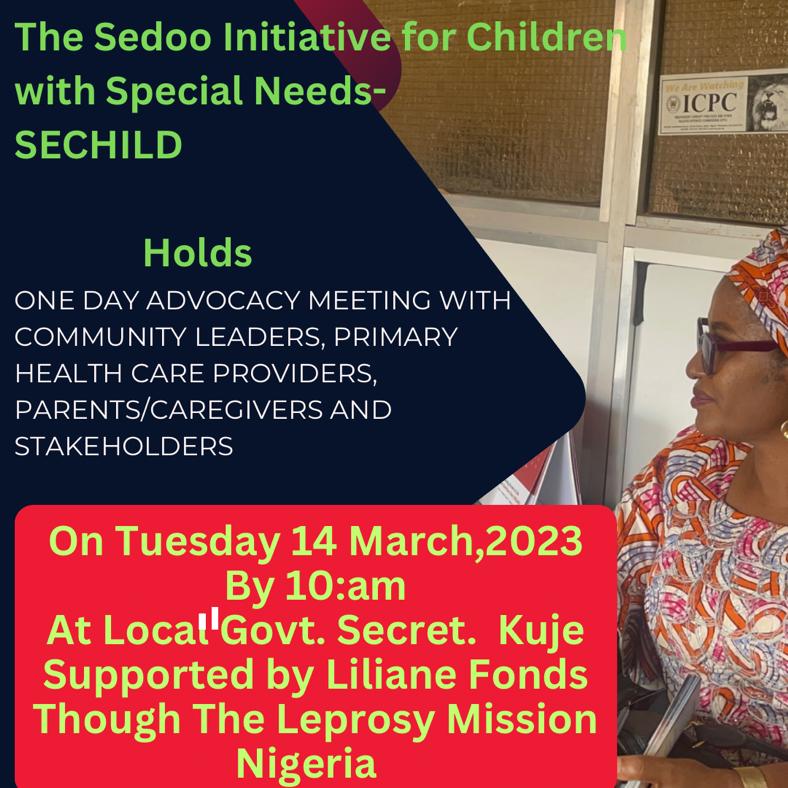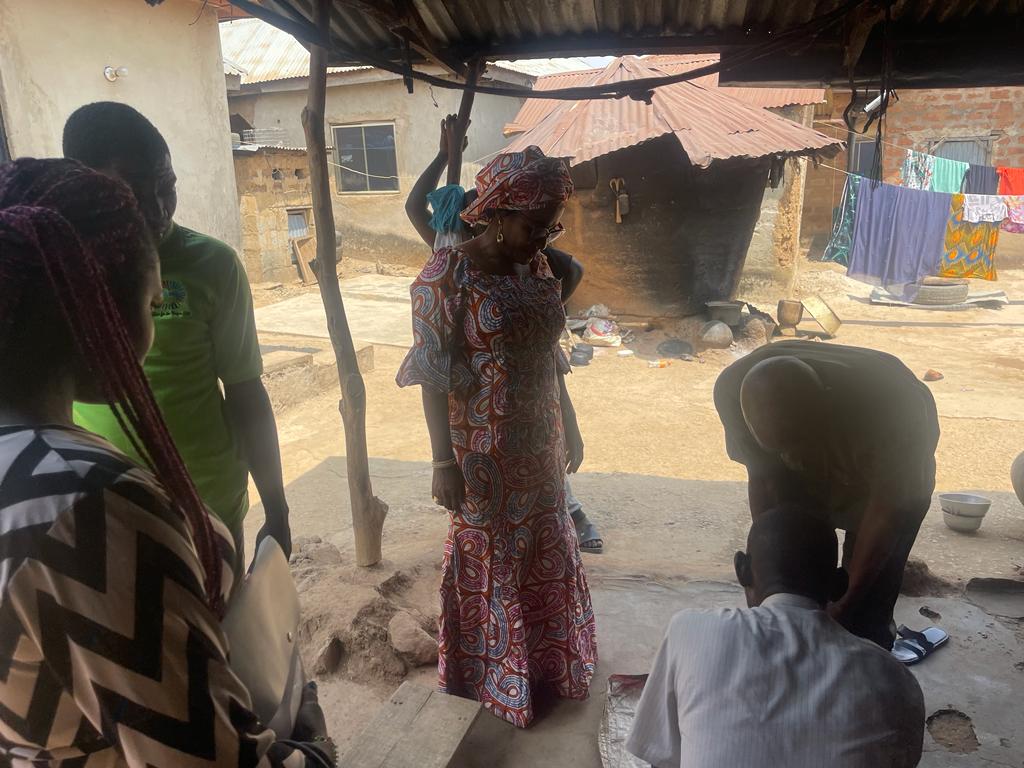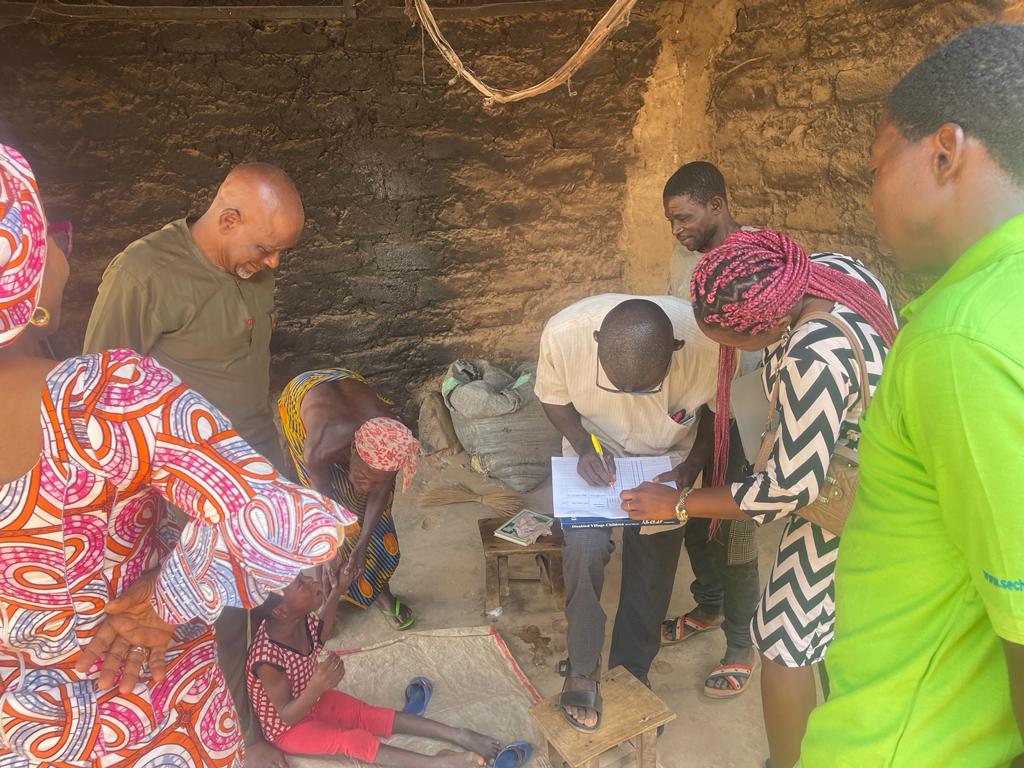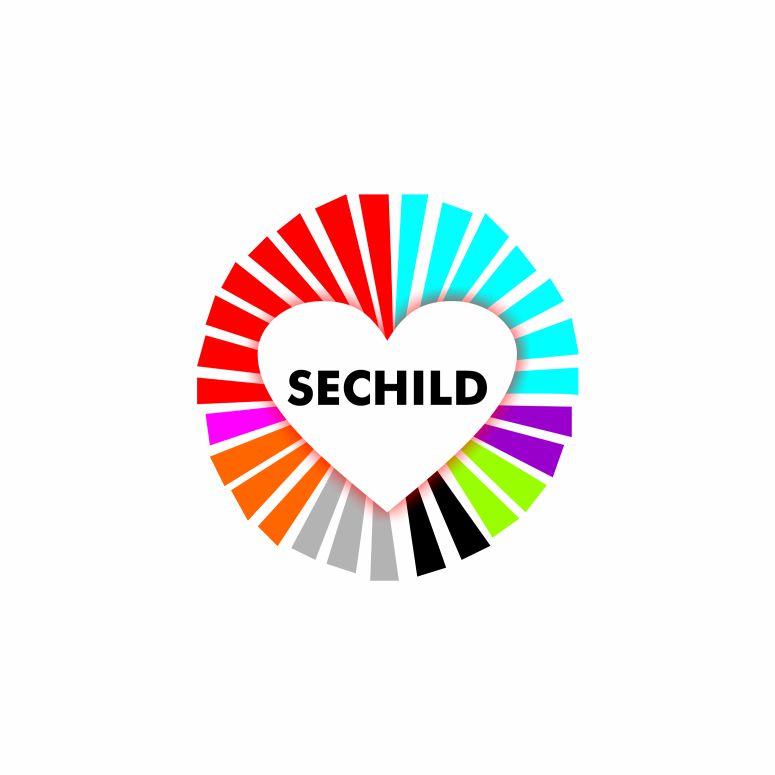1.0 MEETING BACKGROUND
The meeting was organised to intimate community level stakeholders on the project Improving Access to Health Services in Kuje Area Council to foster ownership of the project. In this regard, advocacy to traditional leaders, community groups and parents of children with disabilities was organised to build solidarity and ensure community ownership of the project. Primary Health Care Centers, Parents of Children with Special Needs, Community Leaders and members of rural communities in Kuje Area Council, FCT Nigeria participated in the advocacy.
2.0 HIGHLIGHTS OF KEY POINT
The following are highlights of silent points that were discussed at the meeting;
2.1 Introduction and briefing about the project: The project team was introduced to the Traditional Leaders by Mr. Ogbole Krees community mobilizer. In his introduction he stated that children with disabilities particularly those with Cerebral Palsy are stigmatized and discriminated against. He iterated that they are not witches as society perceives them to be and The Sedoo Initiative For Children with Special Needs (SECHILD) will bring succour to the community to ameliorate their conditions. In response, The President of SECHILD, Mrs Kawan Aondofa-Anjira introduced the organisation stating the vision and mission. She stated that the motivation for the organisation steamed from the fact that she raised two children with Cerebral Palsy. The organisation leads advocacy for the protection of rights and dignity, provides residence care at the SECHILD Center, therapy and special education for children born with Cerebral Palsy. She noted that the Center is small and cannot accommodate the thousands of children who need these services. The project is therefore conceived to reach out to children with disabilities that are far away from development, if primary health centers are strengthened and other service points are identified and strengthened, it will increase the reach interms the number of children accessing care, therapy and rehabilitation. The project will also train health care workers, parents and care givers to provide care in standardized, human rights compliant and inclusive manner. She appealed for support and commitment for full ownership and buy-in to the project.
2.2 Transforming Misconception and negative norms about children with cerebral Palsy: It was disclosed that the society still hold strong negative perceptions about the conditions of children with disabilities. These misconceptions is a major driver of murder and discrimination against these children and their families. Recently a case of child execution was brought to one of the Traditional Leaders for murder of cerebral palsy child. The Traditional Leader refuted and threatened to report the case to the police. Other traditional leaders still believe these children are snakes and should be drowned. It was clarified that children are human regardless of their disability, cerebral palsy is a medical condition that affects the development of the brain children with this condition can achieve their highest potentials in life if they are supported and availed the necessary health support and rehabilitation. It is for this reason Sedoo Initiative For Children With Special Needs with Sponsorship of Liliane Fonds through The Leprosy Mission Nigeria is implementing this project to transform negative social norms that reinforce discrimination against children with cerebral palsy and other disabilities. It was disclosed that the project will work with community leaders and engage peer educators who will work within the communities to transform these negative perceptions and empower parents of these children overcome the fear of discrimination. The capacity of service providers and care givers will be strengthened to provide standardized medical service and care for children and young people with disabilities. In addition, the project will advocate for inclusion, access to quality medical Services, information and care for children and young people with disabilities; promote the fundamental human rights of children and young people with disabilities through sensitization and advocacy. She appealed for commitment and Genuity to the project, collective monitoring to ensure the project succeeds.
2.3 Commitment of Traditional Leaders to promote the project objectives: Although some traditional leaders expressed concerns about lingering traditional norms about the condition of these children, they all affirmed commitment to work with the project team to raise the standards for promoting children’s rights in the community. The Sundaba of Kuje, Esu of Pasali , Chief of Southern Kaduna, Tiv Community and other chiefs committed to mobilize parents and caregivers for therapy and awareness and training on the condition and management. The Chiefs expressed gratitude for choice of selecting their communities and disclosed that these Children face problems because their parents neglect them due to the believe that any child with Disability is not a good child and the child cannot do anything in his or her life and added that they are the most brave children in the society if they are trained well. The Chiefs promised to committedly work with SECHILD and disclosed that one of the nephews of the Chief has Cerebral Palsy and would appreciate any form of assistance that would be given to the child to empower him.
2.4 Appeal for Health Care Center in Pasali Community: The Esu of Pasacili in his reaction appealed for primary health center in his community. He added that the distance in accessing health services discourages must of his constituents. He appealed that project should raise the advocacy and demand to ensure his people access basic health care. Most importantly expectant mothers have encountered challenges in accessing hospitals during labour and prolonged labour one of the causes of birth defecate if this is made available the rate of disability particularly those caused at birth will be reduced.
2.5 Visit to the Affected Parents: The climax of the advocacy was visit to the home of the child with cerebral palsy. Based on the discussions with the parents, he was born with the condition and have lived with it for 7 years and not understanding the nature of alignment. The child was scheduled for assessment and possible admission at the centre for rehabilitation.
2.6 Visit to the Head of Department Kuje Area Council: The HOD of department expressed appreciation for the project stressing the need to strengthen primary health care service delivery. He committed to mobilize primary health care workers and provide necessary support towards the success of the project. He added that there need for proper record on the number of Children with Disabilities and know how to handle them and to reach to the Health Care. It was agreed that the intervention will also entail assessment primary health centres and documentation of number of children with cerebral palsy. The HOD also assigned officer to work the organisation on the assessment of the primary health care service centers and the training of health of care health service workers.
3.0 Closing Remark: The President expressed her gratitude to the Chiefs and Area Council for their commitment to empowering the constituents particularly children with disability also support to the community. She promised to ensure their engagement throughout the project. The President of SECHILD appreciated the chiefs for their commitment and also committed to ensure communities benefitted maximally from the intervention. She prayed for God enablement and the provision of the clinic as requested by the Etsu.
4.0 NEXT STEPS
The following are the next steps were discussed with Chief, Area Council Staff and Community Influencers;
- Mobilization and planning for advocacy meeting with leaders in the health care sector at the SECHILD Center
- Advocacy Visit to religious leaders with the aim to also appeal for service point for theraphy
- Visit to Primary Health Center for Assessment
- Identification and planning of therapy for children CP in the area council
